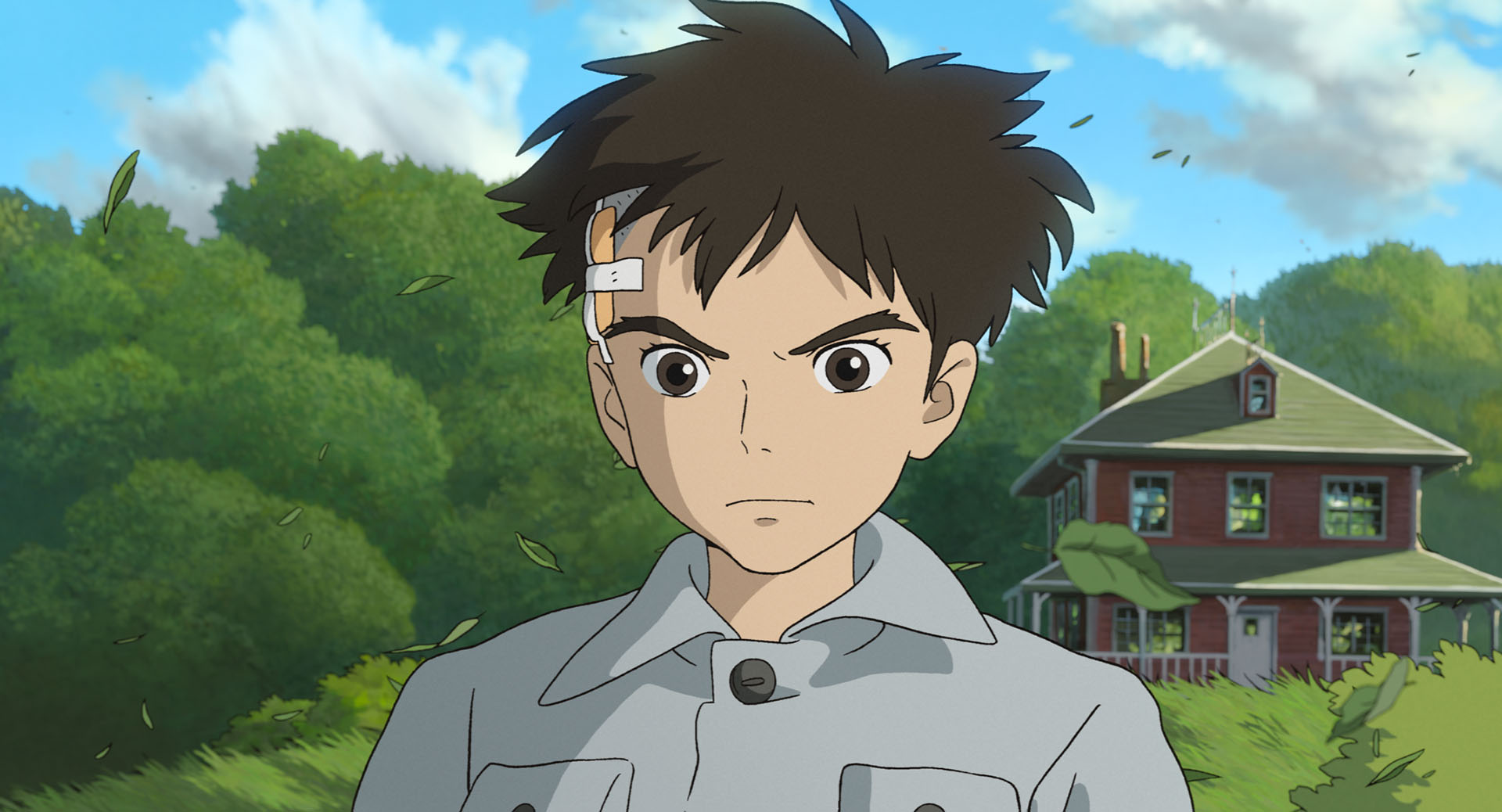
Hayao Miyazaki’s masterful work in animation is something he can’t seem to tear away from. In the late 1990s, he intended the environmental fantasy Princess Mononoke to be his final film. Still, he changed his mind soon after when looking at the famine of good animation for young girls (thus, we got Spirited Away). In 2013, it was proclaimed that his historical drama The Wind Rises would be his final film. Here we are in 2023, and we have another Miyazaki movie. Although expected at this point, there is something to be said of how The Boy and the Heron reflects how Miyazaki will not be around anymore, and Studio Ghibli will continue without him.
Taking place during 1940s Japan, the young Mahito has endured the painful loss of his mother, Hisako, in a fire in Tokyo. Evacuating the city with his father, Mahito stays at the estate of his dad’s new wife, Natsuko, Hisako’s younger sister. Feeling empty in a new environment with cavorting old maids, a pregnant Natsuko, and typical school problems, Mahito finds his mind lingering on the fire, constantly thinking about his mother. So when a strange heron keeps stalking Mahito and saying he knows where to find Hisako, Mahito is more than a little intrigued.
The heron eventually leads Mahito to the old tower on the estate, which was damaged in a flood and boarded up with debris. Upon entering the abandoned structure, Mahito finds himself flung into a magical world in search of his late mother and maybe the pregnant Natsuko if he accepts her as his new mother. The magical heron, a grumpy man/bird, reluctantly agrees to lead the determined Mahito on this journey. The adventure will lead to such wild locations as a kingdom of man-eating parakeets, the adorable balloon-like soul creatures waiting to be born, and the younger versions of familiar faces.
The tower’s magical properties are lightly explained as being a product of the stars and harnessed by the missing granduncle. Mahito will eventually reach the center of the magical journey and how it was first developed by this weird wizard of a man and constantly maintained. It’s impossible not to see some of Miyazaki in this character as a man struggling to keep a hidden world of wonder that requires constant creativity. Without giving too much away, Mahito is more or less sought as someone who can carry on the legacy, but it’s more of a choice than a destiny. There’s a sobering message to all of this about letting go of the past, not being bound by your bloodline, and accepting the future, whatever it may hold.
This picture has a solid mixture of drama and fantasy, making it uniquely distinct from previous Miyazaki movies. Its messaging is more subtle and nuanced than Princess Mononoke and more whimsical than grounded, as with The Wind Rises. It has shades of the charming fantasy creatures of previous Miyazaki movies but has some cleverness with its abundance of birds in all shapes and sizes. It’s also a brilliant adventure about growing up with a heavier focus on grief and acceptance than the sense of identity in Spirited Away. But what sticks out most is the representation of the old, magical tower, highlighting the finite nature of existence. That, eventually, whatever we leave behind will decay over time, a bittersweet notion for adults and perhaps beneficial for the next generation who will learn to build something of their own.
The Boy and the Heron is the perfect film for those who grew up with Hayao Miyazaki’s movies and are readying themselves for when he leaves this world. This may make the movie seem sadder, but there’s a quiet, sublime nature to it all, even for a film with a noisy parakeet kingdom and a girl who can wield fire. It still has cute moments and heartfelt depictions of moving on, getting old, and eventually dying. Combined with the stunning 2D animation Miyazaki is most famous for helming, it’s a remarkable work of art that touches upon something more profound than merely being another animated wonderland crafted by Studio Ghibli. I have no idea when Miyazaki will pass (he’s currently 82) or if he’ll ever be done making animated films, but this does seem like the best note to go out on for one of the greatest animation directors of our time.

 “My Spy: The Eternal City” Review
“My Spy: The Eternal City” Review  “Deadpool & Wolverine” Review
“Deadpool & Wolverine” Review  “The Boys: Season Four” Review
“The Boys: Season Four” Review  “The American Society of Magical Negroes” Review
“The American Society of Magical Negroes” Review  “Twisters” Review
“Twisters” Review  “Sausage Party: Foodtopia” Review
“Sausage Party: Foodtopia” Review  “Robot Dreams” Review
“Robot Dreams” Review  “Godzilla x Kong: The New Empire” Review
“Godzilla x Kong: The New Empire” Review 


